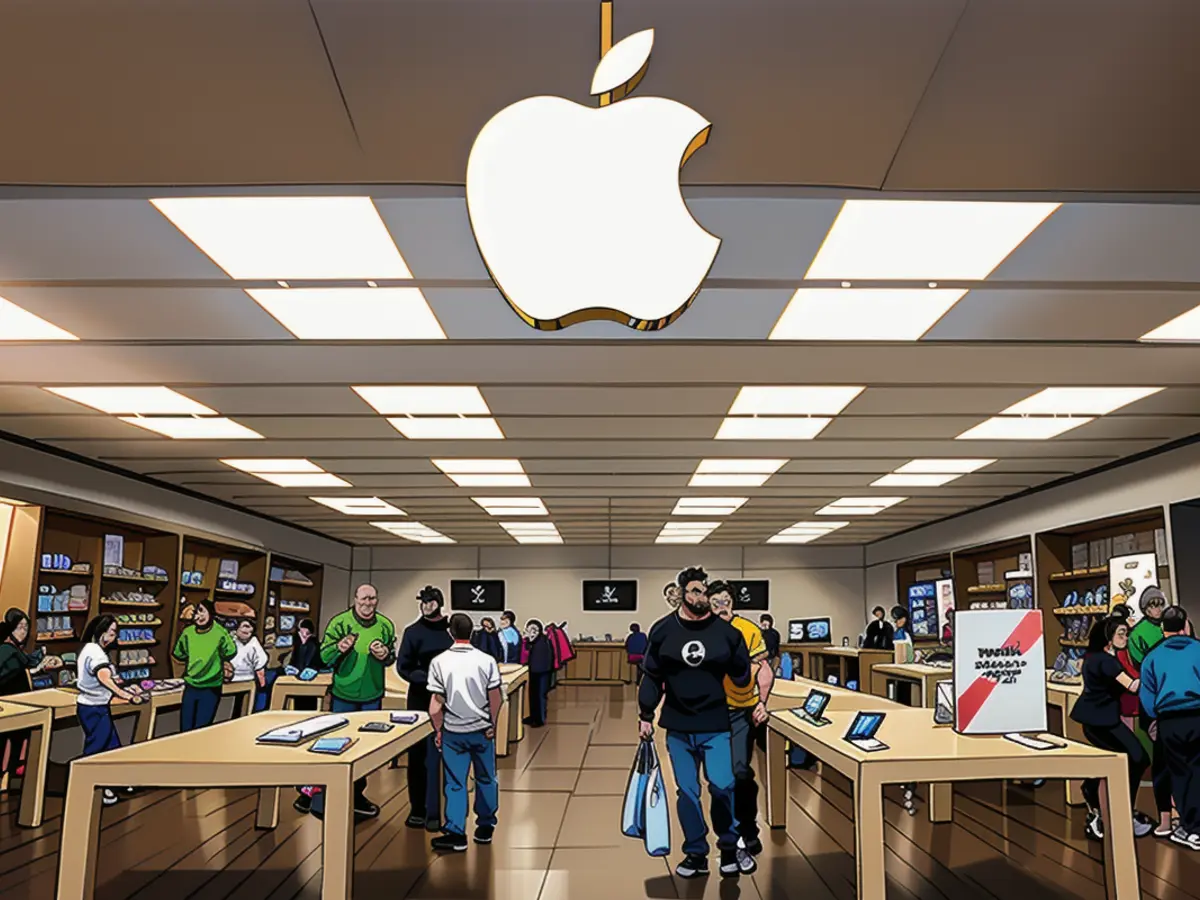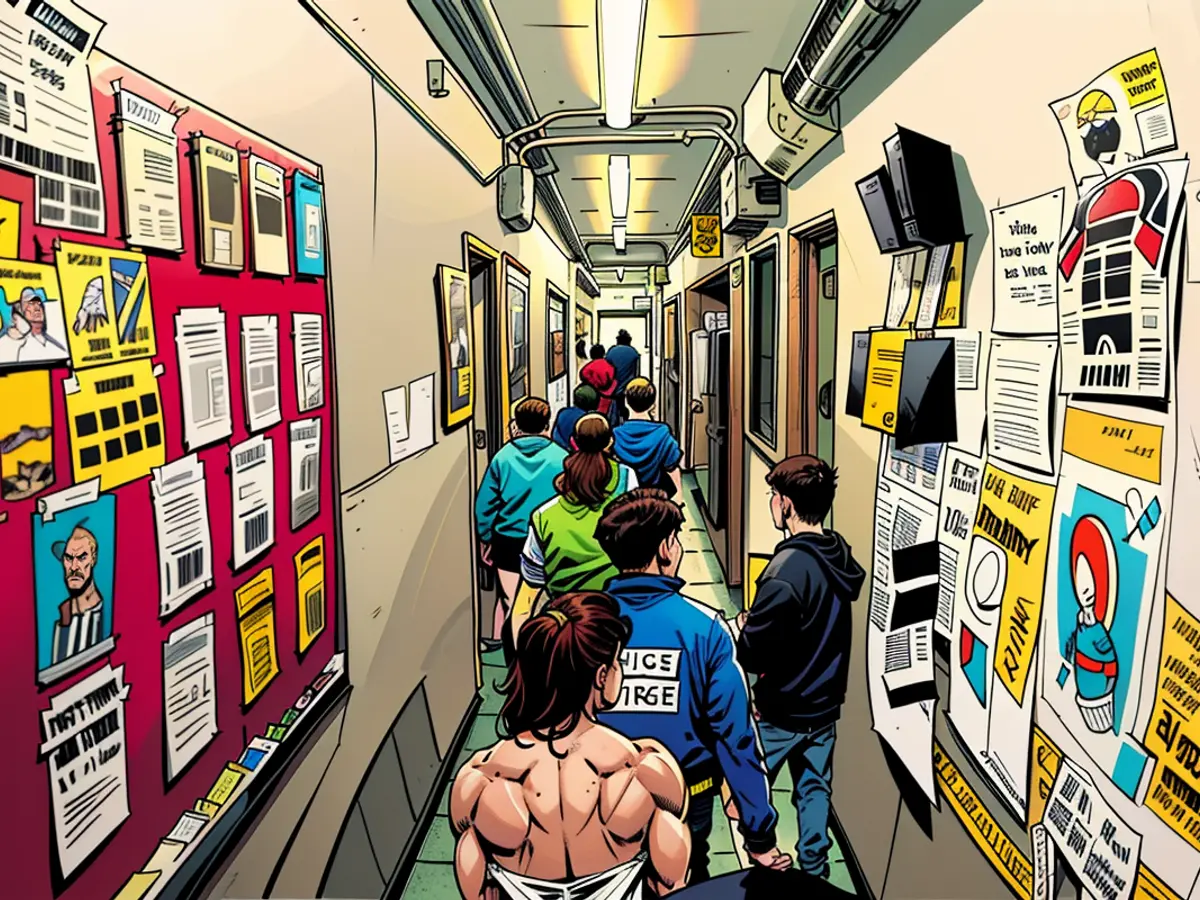The US economy Kamala Harris inherits and how she may run on it
But, as Biden has acknowledged throughout his time in office, there’s more work to be done. That task could now fall to Vice President Kamala Harris, who inherits Biden’s campaign promises to rebuild the middle class, invest in infrastructure, boost domestic manufacturing and lower health care costs.
Since Harris kicked off her presidential campaign, there’s been a string of good news for the US economy.
Strong GDP numbers on Thursday — and the possibility that the US is pulling off the rare feat of bringing down inflation without throwing the economy into reverse — give Harris another point to bring out on the campaign trail in her effort to persuade Americans to give her the White House in November. And on Friday, the Federal Reserve’s preferred inflation gauge fell closer to the central bank’s 2% target — all but cementing a rate cut in September.
Harris will have Biden’s mostly strong economy to run on. Still, one of her biggest challenges is lifting the negative feelings many Americans have about the economy, stemming from sharply higher prices for everything from groceries to rent over the past four years. It remains to be seen whether those perceptions will improve now that Biden is out of the race.
Here’s where the economy stands as the presidential race heads into its final 100 days.
Inflation, interest rates and a resilient economy
When Biden took office, inflation was barely noticeable, with consumer prices rising 1.4% annually. That quickly took a turn for the worse.
By June 2021, Biden’s sixth month in office, the nation’s inflation rate jumped to more than 5%. A year later, after Russia’s invasion of Ukraine sent energy prices soaring, inflation hit 9.1%, the highest level in over 40 years. But much of that inflation was also the product of hefty spending under both Trump and Biden administrations in the wake of the pandemic.
Inflation has since cooled down a lot, and for the first time since the start of the pandemic, prices fell last month. But, on the whole, Americans are paying 20% more for goods and services compared to January 2021, according to Consumer Price Index data.
After the Federal Reserve hiked interest rate hikes to a 23-year high to stamp out inflation, the economy — eventually — started to run at a slower pace. However, it hasn’t slipped into a recession, which is one of the risks that comes with the Fed lifting rates so rapidly. Gross domestic product, a measure of all the goods and services produced in the economy, was solid in the first half of the year. GDP rose at a robust 2.8% annualized rate from April through June, after adjusting for inflation and seasonal swings, according to Commerce Department figures released Thursday.
A white-hot job market that has started to cool
In April 2020, as the US economy came to a screeching halt due to the pandemic, the nation’s unemployment rate soared to nearly 15%, its highest level since the Bureau of Labor Statistics began tracking it in 1948.
By the start of Biden’s term, the unemployment rate had already fallen to 6.4%. But for much of his presidency, the ongoing strength of the labor market defied expectations. The unemployment rate stayed below 4% for more than two years, the longest such stretch of time since the 1960s. But it’s since gone above 4% as cracks in the labor market are starting to form.
An infrastructure bill finally happened
The Biden-spearheaded bipartisan Infrastructure Investment and Jobs Act and the Inflation Reduction Act put more than $1.6 trillion toward rebuilding and modernizing infrastructure, fueling clean energy investments and bolstering America’s manufacturing industry.
While it will take years, if not decades, to realize the full effects of the sweeping legislation — the funding, construction and implementation processes take time — the US economy has already seen some of the near-term effects, including booms in industrial facilities, electric vehicles and manufacturing jobs and the start of long-awaited municipal projects to replace bridges and lead pipes.
A clean energy and oil production boost
Biden’s energy legacy has generally been tied to clean energy, not fossil fuels. His 2022 Inflation Reduction Act included more than $350 billion in support for electric vehicles, charging stations and similar items.
He was often seen as anti-oil, attacking oil companies for record gasoline prices after Russia’s invasion of Ukraine.
But domestic oil production hit a record in 2023, with a daily average of 12.9 million barrels of oil produced. That’s more than any country has ever produced. So far 2024 production is up another 3%.
A friend to organized labor
Dubbed the most “pro-union president in our lifetimes” by the AFL-CIO, Biden has oftenbeen a good friend to organized labor.
His National Labor Relations Board has frequently sided with unions and workers. During the 2023 United Auto Workers strike he became the first sitting president to join a picket line. Union membership and organizing rose during his tenure, and unions won double-digit pay hikes for close to one million members last year.
But he and Congress also imposed unpopular contracts on freight railroad unions, rather than let them go on strike. And even some labor allies expressed concerns about his reelection bid.

Relief for consumers, families and seniors
From forgiving millions of student loans to clamping down on junk fees, the Biden administration has focused on ways to save consumers billions of dollars every year.
That includes a campaign to eliminate or cap “hidden junk” fees and require businesses to be transparent about all fees up front. The Biden administration also finalized a rule to make it easier for airline passengers to get prompt, automatic cash refunds when flights are canceled or significantly changed and to see upfront information about fees for baggage and changing flights.
His administration also provided economic relief for US families during the pandemic: Biden signed into law the American Rescue Plan Act in 2021, which represented one of the largest federal efforts to reduce poverty in the last half-century.
Among a bevy of economic relief measures, ARPA temporarily expanded the child tax credit, which cut the US child poverty rate nearly in half. Through the Inflation Reduction Act, the Biden administration capped monthly insulin costs for Medicare enrollees at just $35, among other drug-cost-lowering provisions.

His administration has also reduced student loan debt so that, as Biden put it, higher education can be “a ticket to the middle class, not a barrier to opportunity.” To date, his administration has canceled $168 billion in student loan debt for 4.8 million Americans.
A strong agenda on antitrust
The Biden administration led a regulatory crackdown on some of the biggest names in corporate America, particularly challenging the market dominance of tech giants Apple, Amazon, Meta and Google.
Together, the Federal Trade Commission, led by Lina Khan, and the Department of Justice’s antitrust division, led by Jonathan Kanter, sued aggressively to block corporate mergers, spearheading an attempt to fulfill Biden’s campaign promise to curb what he framed as corporate greed driving prices higher.
The agencies took big swings, throttling proposed deals among major grocery chains, airlines and pharmaceutical companies. It wasn’t a perfect record — the FTC notched some notable losses, including its effort to block Microsoft’s $69 billion acquisition of video game maker Activision Blizzard. And many efforts, including the DOJ’s landmark case against Apple, could be tied up in litigation for years.
Mixed record on tech sector
Biden has taken a largely protectionist stance toward the tech industry, including signing a high-profile bill in April 2024 to ban Chinese-owned video-sharing app TikTok unless it finds a new owner, citing national security concerns.
He also gave a huge boost to domestic chip production and research with the CHIPS and Science Act, which passed in 2022 and enjoyed bipartisan support, as part of a bid to help the US regain its position as a leading semiconductor chip manufacturer.
But his reception in Silicon Valley was less than friendly as his administration gave more scrutiny to Big Tech mergers. In 2023, the Justice Department and FTC unveiled new guidelines aimed at blocking deals thought to be anticompetitive.
Harris, by contrast, wants to become the first president from Silicon Valley and has received a mostly warm reception from the tech industry.
Record highs for stock holders
Here’s how the stock market performed during each year of President Biden’s term.
2021: The S&P 500 jumped 27%. The stock market prevailed once again despite the deadly Covid-19 pandemic. But investors began bracing for the possibility that the Fed could hike rates for the first time since March 2018 and end the era of “easy money.”
2022: The S&P 500 nosedived 19%. Stocks fell as the Fed began quickly hiking near-zero interest rates to tame wayward inflation, stoking worries that high borrowing costs could eat into corporate profits.
2023: The S&P 500 popped 24%. Stocks logged a powerful year despite the Fed’s continued rate-hiking campaign. That was largely thanks to the artificial intelligence boom, which led to a surge in seven key tech stocks, known as the Magnificent Seven, poised to be at the forefront of the revolution.
2024: The S&P 500 is up about 16% for the year after notching repeated record highs. Strong corporate earnings this year have helped push stocks higher, as well as the continued AI boom. Cooling inflation data in recent months and hopes the Fed will soon cut rates have sparked more euphoria, though stocks have tumbled in recent sessions.
CNN’s Elisabeth Buchwald, Krystal Hur, Chris Isidore, Bryan Mena, Allison Morrow, Erika Tulfo, Alicia Wallace, Alex Leeds Matthews, Jeanne Sahadi, Katie Lobosco and Tami Luhby contributed reporting.
- With the strong GDP numbers and declining inflation rate, Vice President Harris can argue that the US economy is in a favorable position, which could boost her chances in the upcoming election.
- Despite the overall improvement in the economy, one of Vice President Harris's challenges is to address the negative feelings many Americans have towards inflation and high prices, which have persisted for several years.








